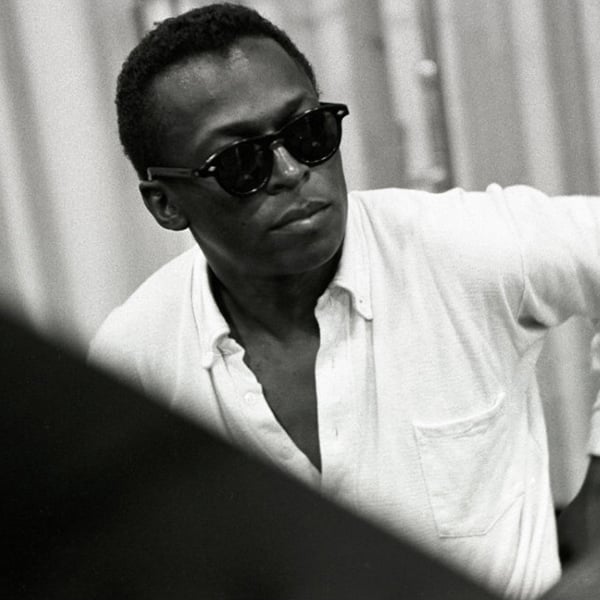
If there is one studio recording that truly captures the Second Great Quintet establishing its identity, Miles Smiles—recorded over two days in October 1966—is it. The cliché avoidance and unpredictability the Quintet had forced into their playing the previous December at the Plugged Nickel was by then an inherent part of their approach, now applied to studio efforts as well as onstage performances: minimal takes, hit-it-and-quit-it energy, leaning on laxity and surprise. Recordings were as open to experimentation as gigs: on half the album’s tracks on this album— “Orbits,” “Dolores,” “Ginger Bread Boy”—Miles insisted Herbie Hancock stop playing chords with his left hand, on only use his right, effectively liberating the music from being locked into certain harmonic patterns that the pianist later admitted had crept into his playing. “It was hard to get used to,” Hancock later wrote in his autobiography, “but playing differently made me hear the song differently, and my right hand responded with new lines…it was a revelation.”
Finding or creating music to benefit from these ideas was the new challenge; on Miles Smiles the quintet did both.
Wayne Shorter’s role as provider of new material for the band was growing, his tunes serving to define their sonic identity; “Wayne contributed some major compositions for the sound of that band,” Hancock once emphasized. Miles Smiles opened with Shorter’s out-of-the-gate explosion of “Orbit”—with its quirky chord progression yet catchy melody—and also features “Dolores,” with its subtly stated theme that spurs a series of contrastingly hard-driving solos, and “Footprints,” a straight-ahead blues with complex, shifting time feels; note how Tony Williams keeps playing after the tune ends, bringing the rest back for one last statement. Shorter had already recorded the last tune for his Blue Note album Adam’s Apple; the version with Miles was the one most listeners would hear and come to love.
Miles’ own “Circle,” the slow, smoky waltz featuring his muted trumpet, opens with a Ravel-like flourish and was built on a reordering of the chords to his 1961 composition “Drad Dog.” The pair of tunes closing the album were both by other jazzmen—Eddie Harris’ snaky-funky “Freedom Jazz Dance” (Ron Carter had played on Harris’ original version for Atlantic) and Jimmy Heath’s 16-bar tribute to his son Jeffrey, “Gingerbread Boy” (the defining trumpet smears in the theme were Miles’ addition).
Both tracks point out Miles’ unerring ear for selecting great material, his appreciation for the groove-oriented feel prevalent at the time—in jazz and popular music—and, especially, Williams’ growing importance in the band. The drummer’s balance of pulse, drama and power—he had recently switched to heavier sticks, reflecting a general volume-raising trend in music at the time—pulled in many ears to these recordings. Still only 20 at the time, Williams was fast becoming the drummer to follow for other musicians and music fans.










